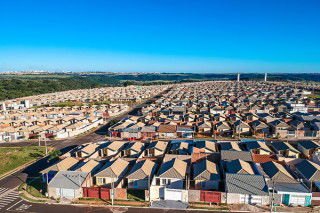Cement consumption in Spain has grown by 13 per cent YoY in the first eight months of the year, reaching 9,581,951t, says Oficemen, Spain's cement association.
In the current scenario, Oficemen estimates that the year will close with growth of nine per cent, when compared to 2020. This would consumption to reach 14.6Mt, similar to the 14.72Mt reported for 2019, the last year not affected by restrictions due to the COVID-19 pandemic.
The forecasts for 2021 would be in line with the current accumulated growth figures in the rolling year (September 2020-August 2021). In the last 12 months, cement demand has increased by 8.4 per cent to 14.5Mt.
Energy costs
The Spanish cement industry is being one of the most affected by the increase in electricity costs, according to a report by the Bank of Spain. Currently, energy costs account for 42 per cent of its variable production costs, which have increased by 12 points since the start of the rise in electricity prices. Added to this is also the cost of CO2 emission rights, the price of which has doubled in the last year, reaching the current EUR61.37/t.
Exports
Exports exceeded 5Mt, with a cumulative growth of 25.4 per cent in the 8M21. However, the negative evolution in July and August has slowed down the growth rate, with a fall of 10.6 per cent last month.
"Spain has traditionally been one of the main cement exporters in the world, but, in the current context of loss of competitiveness, motivated above all by the escalation in electricity prices and emissions, maintaining the current gradual rate of growth requires more and more a greater effort from our industry," added José Manuel Cascajero, Oficemen's recently-appointed president.
Outlook for 2022
"Spain has a significant investment deficit in infrastructure for the environment, where 45 per cent less resources are allocated than the average of our European neighbours," says Mr Cascajero. For the president of Oficemen, "maintaining our competitiveness as a country requires making investments in more sustainable infrastructures that provide economic dynamism, added value and territorial cohesion, in which cement and concrete are key."
With regard to construction, an 18 per cent growth in residential work is estimated for this year, which would mean reaching 101,000 approved homes. This situation is expected to continue in 2022 until reaching 107,500 homes, with a growth of 6.5 per cent.
"If these economic indicators are met, in 2022 the consumption of cement could grow in a range of between 3-5 per cent, reaching 15Mt, a volume that gains value if we take into account that it would become the best record of the last decade," said Oficemen's president.
